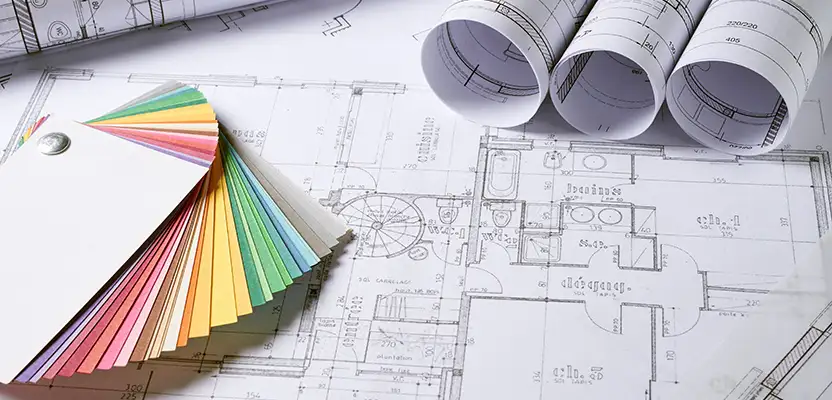Recognizing the Diverse Career Paths Available for Aspiring Architect
As an aspiring Architect, you have a globe of profession courses waiting for you. Whether you're attracted to standard style or the nuances of lasting style, there's a particular niche that lines up with your rate of interests.
Conventional Architecture: Creating Structures and Frameworks
Conventional style concentrates on developing structures and structures that blend performance with visual charm. Your designs can mirror cultural heritage, showcasing local traditions while meeting modern-day requirements.
You'll establish skills in preparing, model-making, and website analysis, permitting you to visualize and connect your concepts efficiently. Involving with customers, you'll need to understand their vision and convert it into viable layouts.
In addition, constructing codes and sustainability methods are vital in your work, ensuring your frameworks are ecologically pleasant and safe. As you expand in your profession, you'll locate possibilities in residential, industrial, or even restoration jobs, each offering special difficulties. Welcoming conventional style leads the method for a meeting profession that admires the past while shaping the future.
Urban Preparation: Forming Areas and Public Spaces
As an aspiring Architect, you can play an essential role as a metropolitan planner, transforming just how communities operate and engage. By utilizing neighborhood involvement methods, you'll guarantee that locals have a voice in forming their atmosphere. And also, integrating sustainable design principles will certainly help produce rooms that not just fulfill today's requirements however likewise protect the future.
Function of Urban Planners
While many might think about designers as the single enthusiasts behind structures, metropolitan organizers play a necessary duty fit the broader landscape of areas and public rooms. They evaluate land use, zoning laws, and neighborhood requires to develop sustainable atmospheres that improve quality of life. By teaming up with different stakeholders, you'll aid develop parks, transportation systems, and houses that promote social communication and ease of access. Urban planners also concentrate on ecological factors to consider, ensuring that growths incorporate green areas and support biodiversity. Your competence in spatial layout and neighborhood dynamics allows you to envision future growth while preserving cultural heritage. In this crucial role, you'll directly affect exactly how people experience their environments, making every project an opportunity for positive change.
Community Interaction Strategies
Reliable community involvement methods are important for urban planners to ensure that the voices of residents are listened to and valued in the preparation process. To cultivate purposeful discussion, you must prioritize open forums and workshops where area participants can express their concepts and worries. Usage studies and social networks to get to a wider audience, making sure diverse viewpoints are consisted of. Collaborating with regional companies can improve count on and facilitate much deeper connections. It is essential to give clear information concerning decision-making processes and proposed projects, enabling locals to feel informed and equipped. By proactively integrating and listening comments, you'll develop areas that mirror the area's needs, inevitably bring about more lasting and effective urban settings. Accept openness and continual discussion for enduring influence.
Lasting Design Principles
When designing city spaces, incorporating sustainable style concepts is important for creating atmospheres that grow both environmentally and socially. You need to start by concentrating on energy performance, utilizing products that lower waste and advertise recycling. Think about integrating green rooms, like gardens and parks, to boost biodiversity and boost air quality. Advertising walkability and public transport can reduce dependence on cars and trucks, fostering a healthier neighborhood.
Designing with water conservation in mind is likewise key-- think of rainfall yards and absorptive surfaces to handle stormwater. Involving neighborhood members throughout the planning process guarantees that the areas you produce meet their needs and motivate social communication. By accepting these concepts, you'll add to lively, lasting city landscapes that profit everybody.

Landscape Architecture: Developing Sustainable Outdoor Atmospheres
As you discover landscape architecture, you'll find vital style principles that create practical and attractive exterior spaces. Lasting methods play an important function in making sure these environments thrive while reducing ecological impact. Plus, you'll locate a selection of job opportunities that allow you to make a genuine difference in just how individuals communicate with nature.
Layout Concepts in Landscape
Comprehending layout concepts in landscape architecture is crucial for creating sustainable exterior environments that integrate with nature. You'll require to ponder aspects like proportion, equilibrium, and range to assure your layouts really feel natural and inviting. In addition, pay interest to seasonal changes, developing with products that enhance the environments year-round.
Lasting Practices Review
Sustainable techniques in landscape style not just concentrate on looks however also focus on environmental health and source preservation. By integrating indigenous plants, you boost biodiversity and lower the need for chemical fertilizers and pesticides. Applying reliable irrigation systems assists save water and lessens drainage, safeguarding nearby environments. You can create spaces that promote dirt health and wellness, such as making use of organic products and exercising permaculture concepts. In addition, integrating green website link infrastructure, like rainfall yards and porous pavements, help in stormwater monitoring and lowers metropolitan warmth. You contribute to a much healthier world and give rooms that foster area link when you produce outdoor atmospheres with sustainability in mind. Inevitably, these practices assure your designs profit both people and the atmosphere for several years ahead.
Career Opportunities Expedition
With a strong foundation in sustainable practices, landscape style provides a selection of job courses that enable you to make a meaningful influence on the atmosphere. Urban planners commonly collaborate with landscape architects to produce green spaces in urban setups, enhancing city livability. If you're enthusiastic regarding her latest blog education, consider coming to be a landscape design educator, motivating future generations.
Sustainable Design: Concentrating On Eco-Friendly Practices
As you explore your profession in design, embracing environmentally friendly practices can establish you apart in an affordable field. Sustainable style concentrates on producing buildings that decrease ecological effect while boosting passenger well-being. By integrating renewable materials, energy-efficient systems, and sustainable building methods, you'll contribute to a greener future.
Beginning by acquiring knowledge of eco-friendly qualifications like LEED or BREEAM, which can boost your credentials. Think about exactly how all-natural light, air flow, and thermal effectiveness can optimize layout. Work together with designers and environmental experts to introduce remedies that reduce waste and preserve resources.
Do not neglect the importance of community involvement-- appealing neighborhood stakeholders can inspire designs that harmonize with the setting. As clients progressively focus on sustainability, your know-how in eco-friendly practices will certainly not just bring in tasks yet additionally fulfill your passion for liable design. Welcome this important aspect of the career, and enjoy your profession thrive.
Historic Conservation: Shielding and Bring Back Social Heritage
While you start on your building trip, think about the important duty of historical conservation in preserving our social heritage. This field concentrates on the protection and remediation of considerable buildings, sites, and frameworks that inform the tales of our past. By engaging in historical preservation, you'll assist safeguard the building heritage that forms community identity.
As a historical conservation Architect, you'll assess historical relevance and evaluate the condition of frameworks. You'll function closely with conservationists and chroniclers to guarantee genuine restoration strategies are utilized. This profession path enables you to blend creative thinking with research, allowing you to develop remedies that value original materials and workmanship.
Your work not only adds to sustainability by reusing existing structures but likewise cultivates a feeling of satisfaction within neighborhoods. Embracing this course will certainly help you end up being a guardian of history, protecting the tales and visual appeals that enhance our lives.
Interior Architecture: Enhancing Indoor Spaces
Historical conservation and indoor style both share a commitment to boosting the constructed atmosphere, yet they focus on different aspects. While historic conservation stresses preserving a structure's social and historic value, indoor architecture nos in on enhancing indoor spaces for capability and visual appeals.
As an ambitious Architect, you'll discover that interior design allows you to mix creativity with technical abilities. You'll design areas that not only look good but likewise advertise convenience and effectiveness. This field entails understanding exactly how light, shade, and materials interact within a space, affecting state of mind and functionality.
You'll work with various projects, from residential homes to commercial workplaces, guaranteeing that each environment satisfies the demands of its occupants. By prioritizing customer experience, you can change interiors right into practical and inspiring areas, making a considerable impact on exactly how individuals interact with their environments. Accept the possibility to improve indoor settings and form the way individuals live and function.
Industrial Layout: Combining Functionality With Aesthetics
Industrial style plays an important duty in developing products that perfectly blend looks with functionality, ensuring that what you utilize daily is not just visually enticing but likewise functional. As an ambitious Architect, you could involve on your own in this area, concentrating on developing whatever from furniture to consumer electronic devices. view publisher site Your job involves understanding user needs, products, and producing procedures, permitting you to develop ingenious services that enhance day-to-day experiences.
In industrial design, you'll often team up with marketers, producers, and designers, guaranteeing that your designs are not only stunning yet also viable. This profession course supplies a vibrant setting where creativity fulfills functionality, making it a rewarding selection for engineers interested in forming the items of tomorrow.
Frequently Asked Inquiries
What Educational Certifications Do I Required to End Up Being an Engineer?
To end up being an engineer, you'll require a professional degree in style, usually a Bachelor's or Master's. In addition, you'll need to finish a teaching fellowship and pass the Architect Enrollment Evaluation to practice lawfully.
Are There Certification Demands for Various Architectural Career Paths?
Yes, there're accreditation demands for various architectural courses. Architect. You'll require to pass exams, full internships, and sometimes pursue specialized training, depending upon your selected focus, like landscape style, city style, or historic conservation
What Software Program Abilities Are Important for Designers Today?

Just How Can I Gain Practical Experience While Researching Design?
You can acquire sensible experience by interning at building companies, participating in design competitions, volunteering for community projects, or teaming up with classmates on real-world projects. These chances boost your skills and develop useful connections in the sector.
What Work Opportunities Exist Outside Conventional Architecture Firms?
You can explore numerous work chances outside traditional style companies, like city planning, interior decoration, landscape style, building and construction administration, property development, and even functions in sustainability consulting. Each deals unique challenges and rewards.
Whether you're attracted to typical design or the nuances of sustainable layout, there's a specific niche that aligns with your passions.When developing urban spaces, incorporating sustainable design principles is essential for producing environments that flourish both ecologically and socially.As you discover landscape style, you'll discover necessary layout concepts that create beautiful and useful outside areas.Understanding layout principles in landscape style is necessary for creating sustainable outdoor atmospheres that balance with nature.In commercial design, you'll typically collaborate with marketing professionals, suppliers, and engineers, making sure that your designs are not just stunning yet likewise viable.